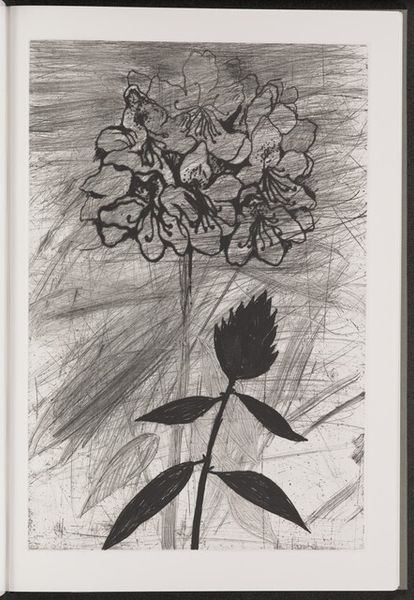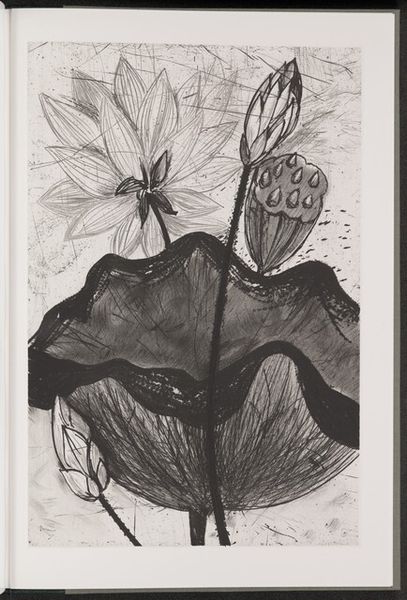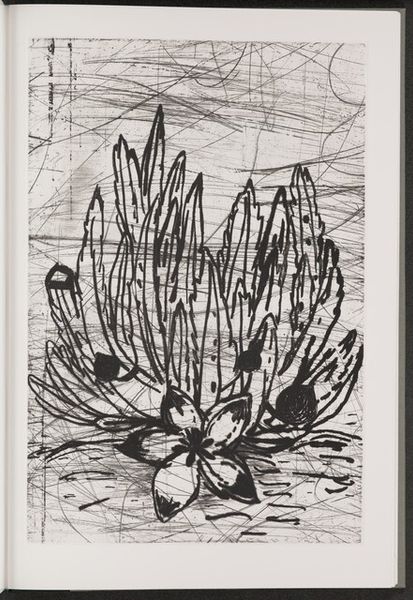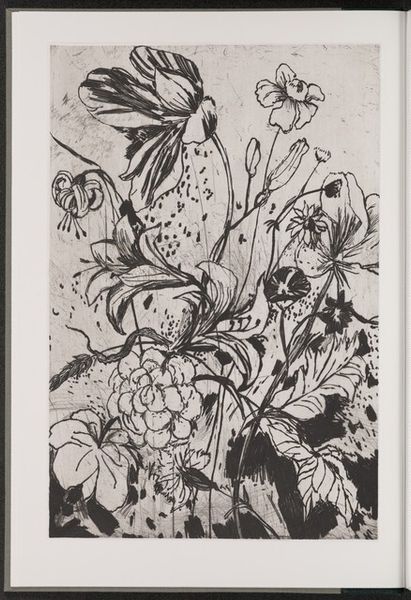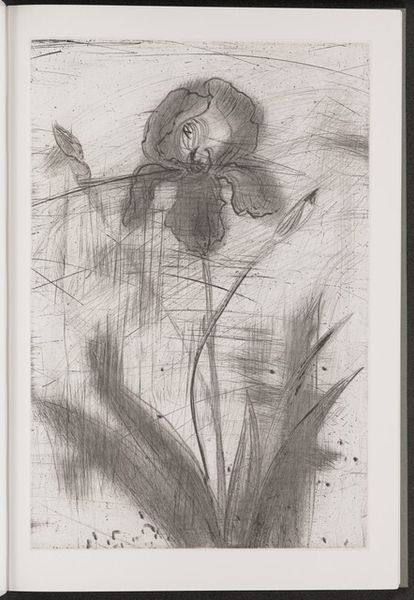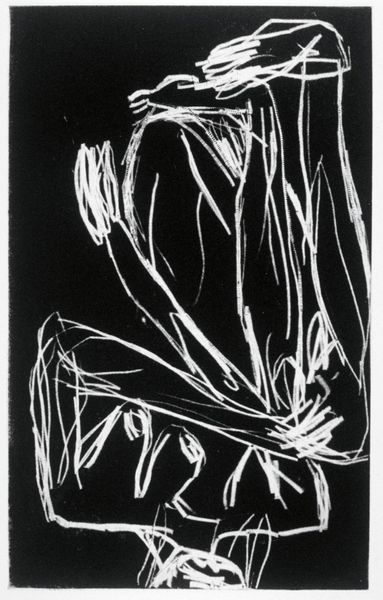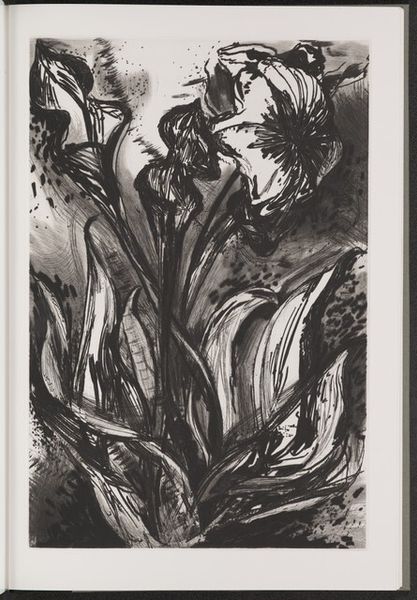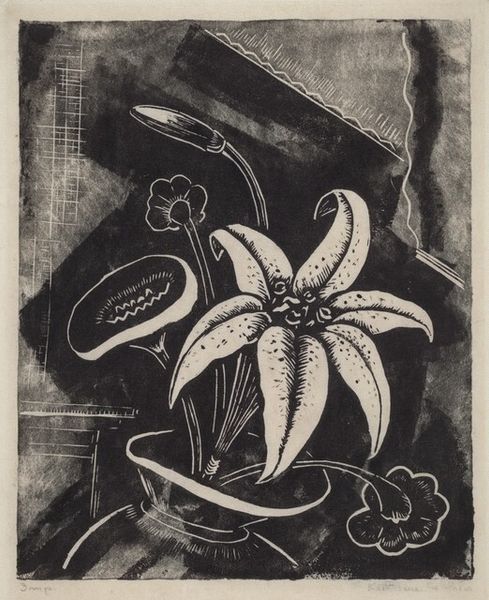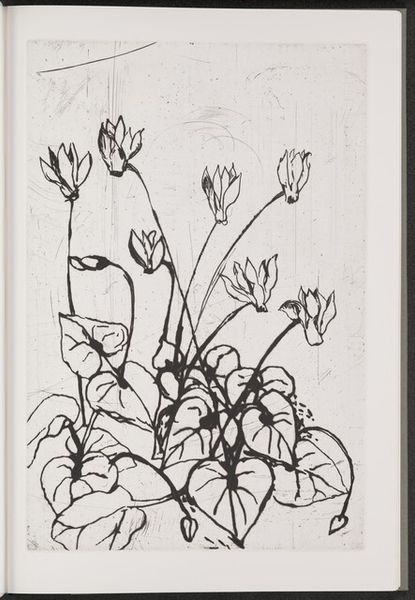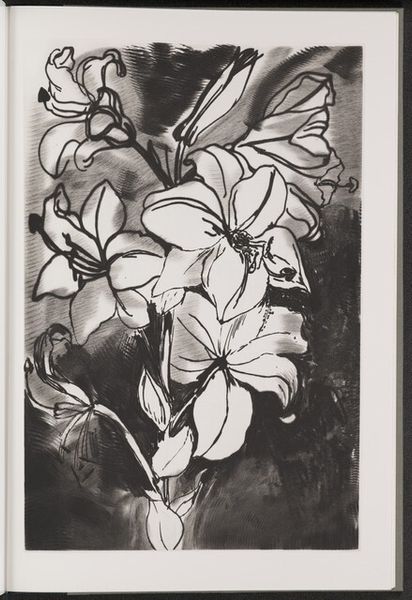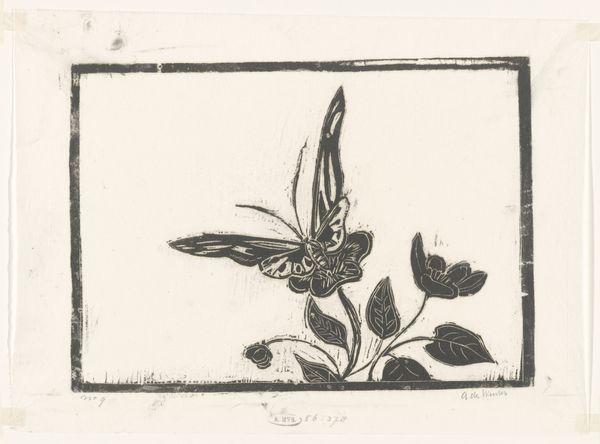
drawing, print, ink
#
drawing
# print
#
ink
#
line
Dimensions: plate: 45.4 x 30.5 cm (17 7/8 x 12 in.) page size: 52 x 35.5 cm (20 1/2 x 14 in.)
Copyright: National Gallery of Art: CC0 1.0
Curator: We’re looking at Jim Dine’s "Blue Egyptian Water Lily" from 1984, a work rendered in ink through a drawing and printmaking process. Editor: It possesses a kind of somber beauty, wouldn't you say? A botanical study, almost scientific, yet infused with a definite melancholic feeling because of the dark inks. Curator: I'd say the melancholy comes through the medium and process, rather than being intrinsic to the flower. Ink as a medium often references a specific history, not only of mark-making but also the history of printing as labour and how those industries have changed since the 80s. It raises questions about reproduction and the value we place on art as reproducible. Editor: It's hard to ignore the deeply symbolic resonances of the lotus though, regardless of the ink. Consider its significance in ancient Egyptian culture – a symbol of rebirth, of the sun, creation itself. Its connection to divinity spans millennia. Curator: Yes, but within a very modern industrial frame – ink production and print manufacture have different contexts now to when it was produced centuries ago. It is Dine's mark making that reminds us of the context of industry, of art labor in the late twentieth century. Even those scratches surrounding the plants, as if Dine intentionally leaves signs of this industrial process. Editor: Perhaps Dine sought to juxtapose the timeless allure of the lotus with the immediacy of the ink, commenting on our persistent need for meaning and immortality even within our industrial world. What appear like accidental marks, I would even suggest function to emphasise an undercurrent of mortality to the bloom. Curator: Or, on a less poetic note, he just liked how the printing plates looked with the added scratches? The work prompts a reassessment of our industrial and contemporary realities through accessible imagery. The fact remains that in the eighties, mass printing would continue its domination and impact on consumption habits, too. Editor: All true, of course! Perhaps it's both, this interplay of the practical constraints with the symbolic weight! Curator: Precisely. Appreciating this artwork also means thinking about the changing world it came from, one in which these mass production materials began dominating artistic process. Editor: Yes, considering these multiple dimensions certainly enhances one's appreciation for this intriguing piece.
Comments
No comments
Be the first to comment and join the conversation on the ultimate creative platform.

